Frequently Asked Questions (FAQ)
Understand the specifics of the Aiddocs. Didn’t find answer?
Contact us and we are happy to help you out.
General
No, Aiddocs is not a DMS. Aiddocs is not for storing but for creating documents. Aiddocs is a service that creates documents as responses to end user application requests. The documents are based on templates stored in Aiddocs service.
No, but the documents created by Aiddocs are often stored to a DMS. Storing, along any further processing is accomplished through the application.
Aiddocs makes it possible to control documents processing by use of metadata. For instance, metadata can be used to control archiving and signing of the document. Metadata can also be used to specify the document attachments.
Document creation in Aiddocs service takes typically around 1–3 seconds. In addition, some time is needed for communication.
Compatibility
Basically, applications only need to build the request for document creation. Typically, the application logic is considerably simplified compared to the traditional techniques, if the development environment provides support for SOAP or REST interfaces. Even legacy applications with no support for those interfaces can use Aiddocs service with the help of our integration libraries.
Creating simple templates is very easy but building structured templates and ones with large amount of document specific data requires more work. If baseline versions of the templates are available in Microsoft Word or Excel format, building Aiddocs templates is more straightforward.
No, Aiddocs does not support traditional Office macros. They should not be needed either, as the macro-based document creation logic can usually be replaced with structured document templates of Aiddocs. Yet, in Aiddocs solution the end-user applications need to implement user dialogs formerly created using macros.
In general, Aiddocs Document templates support any formatting features (pictures, tables, page numbering, document data fields, headers and footers etc.) of Microsoft Word and Excel. In addition, for instance image data and QR codes can be sent to document along other data. All these formattings show also in PDF and even in MHT, where applicable.
Excel document templates have marked data areas, where Aiddocs places the dynamic data provided in a request during document creation. Excel document can contain graphs, pivots etc, which getting updated during document open.
